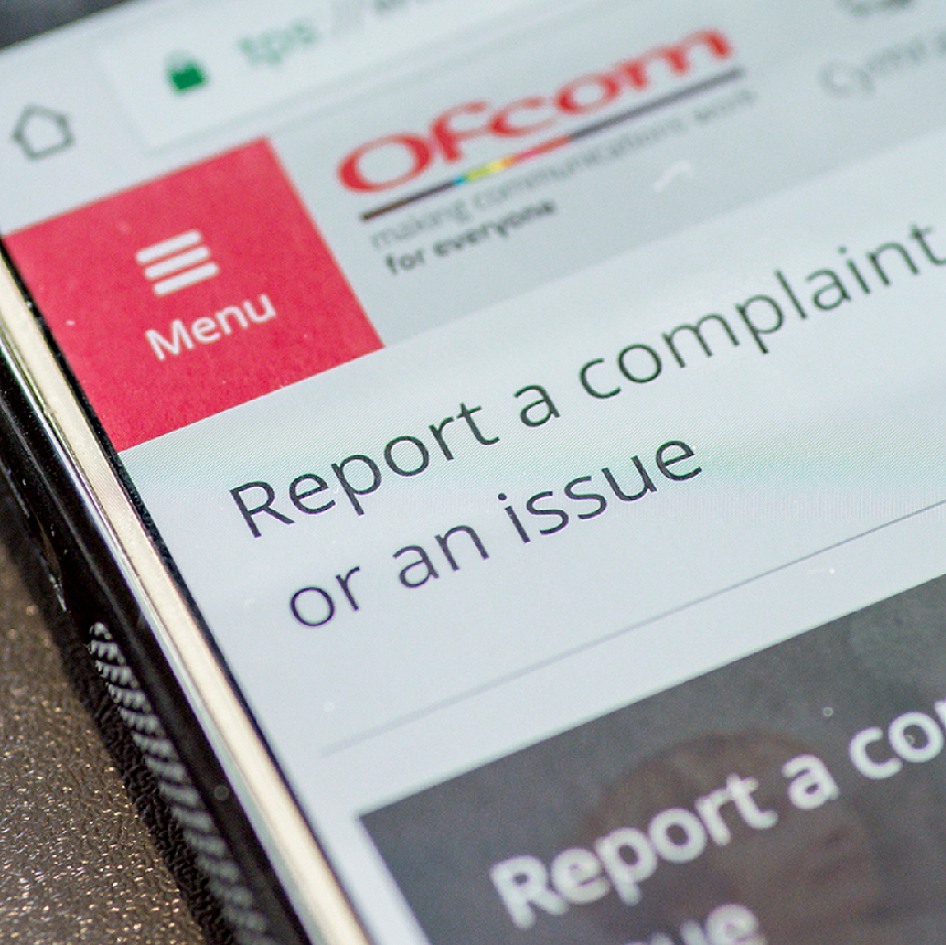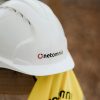Estate Knocks £90k Off Openreach Broadband Quote by Digging Own Fibre
Some 77 homes in the rural Wiltshire UK hamlet of Axford look set to gain access to Openreach’s (BT) “fibre broadband” network (FTTC/P) after Stefan Persson, founder of H&M and owner of the 10,000 acre Ramsbury Estate, got his staff to help dig and lay the new fibre optic cable (saving £90,000).
Apparently both the Estate and Axford have long been suffering from slow broadband connectivity and indeed a quick check suggests that many locals may struggle to receive much more than 1-2Mbps (Megabits per second). Sadly most of the area only appears to be served by older ADSL2+ style connections.
In response, representatives from Axford joined forces with the Ramsbury Estate to find a solution but they were understandable disappointed to be quoted around £170,000 by Openreach (BT) for doing the work. Sadly there’s no mention in The Telegraph‘s summary of whether or not the parties involved also sought quotes from any other operators, such as Virgin Media or Gigaclear, which might have been a wise thing to do.
Alistair Ewing, Estate Manager, said:
“We decided that was not acceptable, so we thought OK, we will do all the digging and trenching and laying directly.
We have some social responsibility as a large estate, so that is what we have done. The villagers in both Ramsbury and Axford have got this get up and go attitude – it is no good standing with you hand out because no one will give you anything.”
The team then spent two weeks digging a 3km long trench across the estate, which managed to knock a whopping £90,000 off the total bill and meant that Openreach could now extend their exist fibre optic cable into the village from nearby Aldbourne. However, there is some confusion over the costing for this, with one local suggesting that it equates to a cost of “about” £600 for each of the 77 houses (we make that £46.2k, so there’s something missing).
At this point it’s also unclear whether or not the village will receive a slower hybrid-fibre FTTC (VDSL2) service or an ultrafast FTTP connection, although one local did say that the fibre “will go straight into the homes” and that implies a Fibre-to-the-Premises (FTTP) connection.
A Spokesperson for Openreach said:
“As part of this partnership the estate management team has self dug around 3km of duct and installed the relevant footway boxes in readiness for the Open Reach engineering to commence.
We are currently working with all parties in this partnership to successfully bring superfast broadband to these communities as quickly as possible.”
The new service is expected to go live sometime in the Spring of 2018. The locals had hoped to be connected by Christmas 2017 but apparently Openreach was too busy. Unfortunately not everybody lives alongside an estate owned by a local billionaire, especially one who would be willing or able to conduct such a development.
NOTE: The attached picture is taken from a different Openreach project.
Mark is a professional technology writer, IT consultant and computer engineer from Dorset (England), he also founded ISPreview in 1999 and enjoys analysing the latest telecoms and broadband developments. Find me on X (Twitter), Mastodon, Facebook and Linkedin.
« EE UK Customer Service Department and Account Pages Suffer Outage
Latest UK ISP News
- FTTP (5513)
- BT (3514)
- Politics (2535)
- Openreach (2297)
- Business (2261)
- Building Digital UK (2243)
- FTTC (2043)
- Mobile Broadband (1972)
- Statistics (1788)
- 4G (1663)
- Virgin Media (1619)
- Ofcom Regulation (1460)
- Fibre Optic (1394)
- Wireless Internet (1389)
- FTTH (1381)
























































Sounds like a lot but over a 3km stretch £30 a metre is about right. If anything pretty good.
It isn’t anything new though – same applies to leased lines. If you want to put the spade work in (or get someone other than OR’s choice of contractors to) you can save a fortune on the ECC elements
I’m not really sure this is the new story that the Telegraph seem to think it is – organisation saved money by digging a 3km trench with their own staff rather than paying somebody else to do it.
always going to cheaper if the community can do it on land that they own and lay the boxes as well
It’s about time the rest of UK got their fair share of the British fibre network too.
Would be good if this was possible in urban areas don’t think the council wouldn’t be too impressed by that though
The point is – Openreach should be able to provide a quote that beats the land owners cost, openreach have dedicated staff and equipment for this type of civil work, as usual they are adding a margin to make the bottom line better,
If they are going to roll-out nationwide fibre they need to come clean with actual costs and maybe they will get third party support,
They have had enough time to reduce the cost of rolling out fibre,
what a ridiculous crazy statement — so you saying its cheaper for someone else to dig a trench and lay duct on your land that it is for you do to do it yourself — that’s frankly barking
Fastman – This type of civil work for openreach should be second nature it is their day Job, not sure you understood the comment,
I understand the comment completely but all of this work is on private land and non existant at present and this work is not undertaken by Openreach — its done by a 3rd party
Sale is just another example of someone who hasn’t the foggiest of what they are talking about but just want to have a go at BT Group.
@Salek
You need to consider wayleaves – the landowner doesn’t pay them but third parties have to – unless of course the landowner waives them, which few do. You also need to consider whether the landowner included labour and equipment costs in its calculations, and also whether these were at full commercial rates.
In reality it would be surprising for any third party to be able to undercut a landowner with staff on site and access to the necessary equipment such as mole ploughs etc.
One of the biggest problems I have is that so far most of the Fibre Optic is being focused on the rural areas. Sure most rural areas have the worst broadband compared to the main cities.
But it appears that until Fibre Optic isn’t supported across all rural areas, towns, villages, etc. None of the ISP providers will take initiative to lay Fibre in the major cities like London, Manchester, etc.
BT Openreach are definitely quite useless. I asked them recently via email when I will get Fibre supported here in my E1 area. I got a response saying that they’ll get back to me but never did.
“You’re in a plan to get Superfast fibre but we haven’t started work yet.
It’ll be built either as part of our fibre programme or through a partnership with your local authority.”
That’s been like that last 3 years. Surely urban areas should be more important, it’s where it drives businesses and growth! Rural areas are a luxury but it shouldn’t be their main focus. I know the digging is easier in the villages but it’s still no excuse for BT Openreach or the rest of the providers to be lazy.
We will definitely have to wait another 10-15 years at this rate to have the footprint covered nationwide.
The 95% access to superfast broadband is a big lie. I have 3 leaseholders properties in Central London, only one of the properties have FTTC up to 76Mbps. Not good enough!
@ Rahul – the independent analysis done by Thinkbroadband (https://www.thinkbroadband.com/news/7904-december-update-on-state-of-broadband-coverage-across-the-uk-and-regions) for the end of November 17 showed London as having 96.6% at greater than 24Mbps with only 0.1% under 2Mbps and a national coverage of 94.5% and 0.7% respectively.
The reason why two of your properties in Central London don’t have FTTC or FTTB or FTTP is because no-one has found a commercial case to provide it – of course if it were so important to your business you could always fund it yourself, unless it didn’t make sense for you to spend the money either.
@ Gadget. I think this statistic is pretty much bogus. Here’s why. The average packages that are provided is up to 17Mbps across all providers. But that is not what you get via copper wire. The average is quite a bit less than that. The fastest download speed I’ve had on record was 16.60 Mbps via speedtest.net in August 2017. My current download speed averages at around 11Mbps. I’ve never seen a higher speed test than 13Mbps since last September. And I live in a high-rise building flat just 10 minutes walk near Liverpool Street Station and the city. You’d expect that it should be supported. But unfortunately the Bishopsgate cabinet exchange is at least 800 meters from the property hence why we haven’t even got FTTC yet despite it saying that we are in a plan.
Meanwhile, Hyperoptic are very much eager to install Fibre in my building after 30+ residents registered their interest. But the problem is that the building authority (technical manager) says he is not in a position to grant Hyperoptic the permission to deploy fibre optic cables. They are worried about more important issues like Fire Safety with the Cladding works. So the managers told me after fire safety issues are sorted out then they’ll consider fibre as an issue at a later stage.
I wished I could fund it myself. But City of London is not like rural Lancashire’s B4RN project. B4RN could do this because there’s no restriction such as digging asphalt and roadblocks. Digging the soil is much easier and doesn’t require the special permission that you need to in the urban areas.
That’s why it’s going to take a long time. And I’d be very disappointed if after waiting another 10-15 years we get FTTC instead! 24Mbps is not good enough. I was in Bulgaria on holiday visit where my mum is from last October everywhere they have 50-100 Mbps download speed via Wi-Fi and Fibre Optic. 80% of Bulgaria has FTTB/H. We are sitting here in the UK at 3% we have a long way to go before we can catch-up with the rest of Europe…
@Rahul – ‘I think this statistic is pretty much bogus’ Is your experience representative of the whole of London?
Somerset, The numbers for urban are problematic as the impact of ELO is not itemised specifically. Ofcom itemise a big concern for SME which is related.
In this case the French practice of requiring building owners (MDU’s and offices) to provide conduits (ducts and risers) to support fibre upgrades for multiple operators would seem worthy of being copied.
The B-USO analysis (Ofcom/Analysis Mason) and (BSG/Plum Consulting) did not fully deal with the issue that the absolute numbers in Greater London (or locations with copper only environments in urban areas – ignoring private circuits) that cannot access 10Mbps is a significant proportion of the total, something unsuited to a B-USO described in the form of a retail ISP package. The urban numbers become a greater proportion once the impact of R100 and the remaining BDUK work is extracted.
I think this problem needs a specific costed target built into the current WLA process, as a forerunner to any subsequent more ambitious target.
@NGA
I’m curious to know why you think a well-known musical group would have any impact on broadband deployment in urban areas! 😉
More seriously, why do you believe Exchange Only Lines are not properly reflected in the numbers reported by Think Broadband and others? Can you cite examples?
Note the Ofcom stats for SMEs are totally spurious as they exclude the vast majority (over 75%) of SMEs in the UK that have no employees such as sole traders, partnerships etc. Another sad example of Mssrs Hodgson and White being more interested in politicking than in facts.
you could cofund a fibre cabinet / fibre Rack in yout basement of your block a number have already done that with Openreach (inclunding now some 2- 3 years ago — yes they were EO lines but the choice is up to you
Cofund for what? To have just FTTC?! Do you think that’s worth it? I personally don’t.
Right now the problem is that I can’t cofund even with the neighbours, until the building authority does not agree for this to happen.
I’ve spoken to the managers on multiple occasions over the last 2 years. I’ve also spoken to Hyperoptic representatives via email. They too have expressed frustrations that they cannot seem to get hold of the building authority to make a deal. They even emailed them with a CC that they would like to meet with them to discuss this. But the managers did not even respond to their email.
So this leaves me with only 1 option. To persistently give pressure every once in a while for the next 10-15 years and perhaps even involve the neighbours to make appointments with the managers. I know that sounds crazy. But these incompetent building managers are more busy worrying about what beer to drink tonight than making any agreements for fibre optic broadband!
Or I have to hope for a change in the managerial authority. Maybe if one of them retires and gets replaced with another more competent person then there is hope for Fibre to be agreed.
Here’s why I am pessimistic about a Full Fibre rollout for the entire UK. We have building managers across entire blocks of flats across the country. Convincing an authority is unlikely to happen across the entire UK any time soon. This will definitely contribute towards the delay of the Fibre roll out.
From my observation looking at Hyperoptic buildings that are supported they tend to be under Council Estates where granting permission is easier or they are newly built buildings.
Private building authorities are harder to convince. Too many rules in place. Can you believe that my building put rules in place, no laminate floor allowed, no pets allowed, no individual satellite dishes allowed, no drilling holes inside the apartments allowed, no external steel door allowed, etc, etc.
Now when you have an authority like this that is so unnecessarily strict. It’s no wonder the Fibre Optic Agreement is also failing. They’ve put Fire Wardens patrolling our building 24/7 and can’t even sort out the cladding fire safety issues all these months. And this is their great excuse for not making a fibre agreement!
Rahul – as a sweeping generality most building managers will be opposed to work running new cabling of any sort to every apartment be it copper or fibre. The FTTB approach puts the electronics typically into the basement and uses the existing copper to feed, negating the need for any internal alterations. This was the approach that Fastman was advocating under the aegis of the Community Funding scheme.
Wait, you’re whinging that you don’t get more than 10Mbps on average. THAT could be a contributing factor as to why certain places in London are back of the queue compared to rural areas. Did you not read, 1-2Mbs they had.
My partners dad, he’d be over the flipping moon if all he got was 11Mbs. He too lives in a rural area with the maximum speed EVER just over 2Mbs. So yeah I know who I’d give my first priority, the person who’d be happy with 11Mbs.
Do you know how frustrating an average download speed of 1.5 is? Forget streaming, 2Mb is recommended for the minimum.
At least 10mbs is usable.
@Rahul
Gadget makes a good point, installation of a cabinet in the basement would negate the need to put new cabling in the building risers. Given distances to apartments would be relatively short, you out to be able to receive speeds of around 80Mbps using VDSL, and could of course include G.Fast to enable speeds of 300Mbps.
You’d still need permission from the landlord or managing agent, but just to locate the cabinet in a secure space in the basement rather than to undertake any building-wide cabling work.
Liquidate some of the property empire and escape to somewhere with fewer rules, more space and faster broadband. Job done.
I’m with Bex on this one.
I live in MCR city centre, and (thankfully) am also getting about 17 Mbps (11-ish over wireless).
That does me.
I understand it won’t do everyone, but if I had the choice of 2 Mbps or 11 Mbps, I’d snap their hands off for 11 Mbps.
And.
If I was responsible for building a network, and had 2 options.
1. Increase the speed of the person getting 11 Mbps
or
2. Increase the speed for the person getting 2 Mbps
I wouldn’t choose option 1.
You see that is exactly the reason why we are lagging behind.
@Bex: That is exactly what I sensed. BT Openreach and the Government are ignoring places where people get 11-16 Mbps and are focusing first on the areas with 1-2 Mbps.
The problem with this is it’s going to take ages before all of these parts of the UK get supplied with Fibre Broadband to improve their speeds. So this leaves the big cities such as myself with this internet.
Also the problem is even if FTTC or GFast allow for 24+ to 300Mbps many lines cannot cope with the speed due to poor noise margins. The higher the speed, the lower the noise margin. If noise margin drops below 2db the internet will dropout. Along with heavy rain which also causes the internet to drop thanks to outdated copper wire.
Fibre optic promises to solve internet drop-outs as it is unaffected by weather interference’s. Having and demanding fibre is not just about better internet speeds, it’s also about having a more reliable connection. FTTC is not something I wish for, it’s a bottleneck because A) you don’t get speeds higher than 300 Mbps, like with FTTP that delivers 1Gbps and B) The risks of connection drop-outs continue to carry through thanks to the copper wire.
FTTC/GFAST is like installing a GTX 1080 Graphics Card into a Pentium 4 Processor The Pentium 4 CPU in this case will be a bottleneck as it will not provide the full juice for a modern GPU like a GTX 1080. That is a similar comparison to FTTC where Copper Wire carries the rest of the internet speed which is why the further away your home is from the exchange the lower the speed is.
The reason I am not happy with having 11Mbps. That’s fine if it was a decade ago. Now we require more data. For example I am a PC Gamer. FIFA 11/12 and NBA 2K12/13 PC versions were 15GB only. Now FIFA/NBA 2K 17, 18 on PC require 50GB hard drive space. And to make things worse Retail DVD versions of PC games are almost in extinction.. So I have to download large games through Digital Download services like Origin, Steam, GOG.com, etc. And this requires fast internet speed.
To download a 50GB game digitally even with 11Mbps will take me around 12-15 hours. I had to many times leave my computer on in the background while I sleep at night to finish the download completion as it affects the use of your normal internet browsing while the games are being downloaded.
I’ve experience it all from my childhood Dial-Up days and with 1Mbps in 2005 with Tiscali. Of-course those days were the worst. These problems are all thanks to the 140 year old copper wires. The sooner we ditch them, the better!
@Rahul
The problems that you ascribe to FTTC and G.Fast in your fourth paragraph don’t really apply if you install the cabinet in the basement of your building – no weather issues, much shorter line lengths etc. Note also that G.Fast already supports speeds higher than 300Mbps and the tech is constantly improving.
Whilst FTTP might be even better, if your landlord or managing agent is unwilling to allow extensive cabling work throughout the building then it’s academic. Better to have 300Mbps than not have 1Gbps surely, especially when your do nothing option is 11Mbps.
As one of the main drivers for the Axford and Ramsbury Estate project I can fill in some of the gaps in the article. Firstly it is definitely FTTP as there is no cabinet in or near our village.The fibre is being brough to our village using overhead cabling from the exchange of a nearby village, Aldbourne. As regards the cost the actual price was for the full 85 premises and averaged out at £948.20. However, this is part subsidised by the Better Broadband Scheme of £350 for those properties which are eligible, around 61 of the 77 that have chosen to take the scheme up. Overall, after some help from the Parish Council there will be a small shortfall. This is being filled by some kind souls in the village who have agreed to help fund the shortfall on a long term loan basis.
As regards the trenching work, the Ramsbury Estate own some of the relevant equipment and were able to do the trenching for a fraction of the BT Openreach cost. Some comments suggested that BT Openreach should be able to do the trenching more cheaply than the local estate owner. This ignores the way that BTO fund their services with a huge overhead cost for all their operations.
I hope that clarifies some of the points.
Ashley can I pick your brains about the self dig project? How exactly did you do it? Can we borrow your equipment?! I’m chair of a small village around 50 properties 5 miles from Buckingham. We’ve been fighting for over 4 years to get superfast, all the surrounding villages have it. At long last and in desperation we accepted a community fibre partnership scheme which quoted 46k to deliver FTTP to the outlying properties and 20k for a new cabinet to serve the core of the village FTC. With various grants and use of vouchers we ended up with a shortfall of 16k which the village had raised, but now Openreach are saying oops sorry that figure included various bits of self dig – probably around the same distance all told as you did in Axford. If we let BT do it the shortfall is 50k, which is too much. Would love to get your advice.